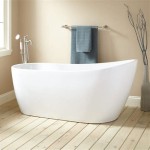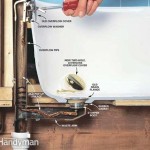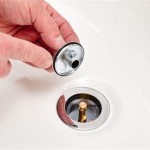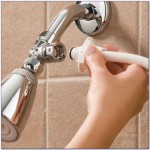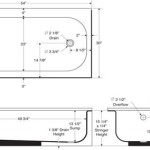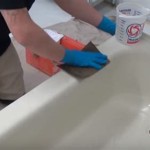Unclog Bathtub Drain Liquid: A Comprehensive Guide
A clogged bathtub drain is a common household nuisance. The gradual accumulation of hair, soap scum, mineral deposits, and other debris can restrict water flow, resulting in standing water during showers or baths. Addressing this issue promptly is essential to prevent further complications, such as unpleasant odors, bacterial growth, and potential damage to plumbing fixtures. One of the popular solutions for resolving this problem is the use of unclog bathtub drain liquid.
This article provides a comprehensive overview of unclog bathtub drain liquids, covering their mechanism of action, different types available, safety precautions, and best practices for effective use. It aims to equip readers with the knowledge necessary to confidently choose the appropriate product and apply it safely to resolve bathtub drain clogs.
Understanding the Mechanism of Action
Unclog bathtub drain liquids operate by chemically breaking down the organic matter causing the blockage. The primary active ingredients in these liquids typically consist of strong alkaline or acidic substances. Alkaline drain openers, such as those containing sodium hydroxide (lye) or potassium hydroxide, work by saponifying fats and dissolving hair. Saponification is a chemical process where fats and oils are converted into soap and alcohol, making them more easily flushed away.
Acidic drain openers, on the other hand, often contain sulfuric acid or hydrochloric acid. These acids dissolve organic materials through hydrolysis, a chemical reaction where water is used to break down chemical bonds. Sulfuric acid is particularly effective at dissolving hair and grease, but it is also highly corrosive and requires extreme caution during use.
The effectiveness of a drain opener depends on several factors, including the type of clog, the concentration of the active ingredients, and the duration of exposure. For example, a clog primarily composed of soap scum may require a different type of drain opener or a longer application time compared to a clog mainly consisting of hair.
It's crucial to understand that repeated use of harsh chemical drain openers can damage plumbing pipes over time. The corrosive nature of these substances can erode the inner lining of pipes, leading to leaks and costly repairs. Therefore, preventative measures and alternative unclogging methods should be considered before resorting to chemical drain openers.
Types of Unclog Bathtub Drain Liquids
The market offers a diverse range of unclog bathtub drain liquids, each with its own formulation and target application. These can be broadly categorized into chemical drain openers, enzymatic drain cleaners, and natural drain cleaners. Understanding the distinctions between these types is essential for selecting the most appropriate product for a specific clogging issue.
Chemical Drain Openers: These are the most potent and widely available type of drain cleaner. They typically contain strong acids or alkalis, as previously described. While highly effective, chemical drain openers pose a significant risk to human health and the environment. Proper ventilation and protective gear, such as gloves and eye protection, are mandatory when using these products. Furthermore, chemical drain openers are not suitable for all types of pipes. For example, they can damage older pipes made of cast iron or galvanized steel. It is vital to consult the product label and plumbing system specifications before using a chemical drain opener.
Enzymatic Drain Cleaners: Enzymatic drain cleaners utilize naturally occurring enzymes to break down organic waste. These enzymes are specifically designed to digest fats, oils, grease, hair, and other organic matter that commonly contribute to drain clogs. Unlike chemical drain openers, enzymatic cleaners are non-corrosive and biodegradable, making them a safer and more environmentally friendly option. However, they tend to be less effective for severe clogs and require regular use to maintain clear drains. Enzymatic drain cleaners are often marketed as preventative maintenance tools rather than emergency solutions.
Natural Drain Cleaners: This category encompasses a variety of homemade or commercially available solutions that rely on natural ingredients to unclog drains. Common examples include baking soda and vinegar, hot water, and salt. These solutions are generally less potent than chemical drain openers but are also significantly safer and more environmentally friendly. Natural drain cleaners are best suited for minor clogs or preventative maintenance. For instance, pouring a cup of baking soda followed by a cup of vinegar down the drain, then flushing with hot water after 30 minutes, can help dissolve grease and clear minor blockages.
When selecting a drain cleaner, it is crucial to consider the severity of the clog, the type of pipes in the plumbing system, and personal preferences regarding safety and environmental impact.
Safety Precautions and Best Practices
Using unclog bathtub drain liquids safely and effectively requires adherence to specific guidelines and precautions. Failure to follow these instructions can result in personal injury, property damage, or environmental contamination. The following are essential safety precautions and best practices to observe when using drain cleaning liquids:
Protective Gear: Always wear appropriate protective gear, including chemical-resistant gloves, eye protection (such as safety glasses or goggles), and a mask or respirator if the product emits strong fumes. This is particularly important when using chemical drain openers, as they can cause severe burns to the skin and eyes.
Ventilation: Ensure adequate ventilation in the area where the drain cleaner is being used. Open windows and doors to allow fresh air to circulate and prevent the buildup of harmful fumes. Avoid inhaling vapors directly from the drain, as they can irritate the respiratory system.
Read the Label: Carefully read and follow the instructions on the product label. Pay attention to the recommended dosage, application time, and safety precautions. Never exceed the recommended dosage, as this can damage pipes or create hazardous chemical reactions.
Avoid Mixing Chemicals: Never mix different drain cleaners or other household chemicals. Mixing incompatible substances can produce toxic fumes, explosions, or other dangerous reactions. For example, mixing an acidic drain cleaner with a bleach-based cleaner can release chlorine gas, which is highly poisonous.
Protect Surfaces: Cover surrounding surfaces, such as countertops and floors, with protective materials to prevent accidental spills or splashes. Drain cleaners can stain or damage delicate materials. In case of a spill, immediately wipe up the affected area with a damp cloth and soap.
Proper Disposal: Dispose of empty drain cleaner containers and unused product according to local regulations. Do not pour leftover drain cleaner down the drain, as this can contaminate the water supply. Contact the local waste management agency for information on proper disposal methods.
Keep Away from Children and Pets: Store drain cleaners in a secure location out of reach of children and pets. The corrosive nature of these products makes them extremely dangerous if ingested or splashed on the skin or eyes. Consider using child-resistant caps on drain cleaner bottles to prevent accidental access.
Test in an Inconspicuous Area: Before applying the drain cleaner to the entire drain, test it in an inconspicuous area to ensure it does not damage the plumbing fixtures or pipes. This is particularly important when using a new or unfamiliar product.
Alternative Unclogging Methods: Before resorting to chemical drain cleaners, consider alternative unclogging methods, such as using a plunger, drain snake, or wet/dry vacuum. These methods are often effective for removing minor clogs without the risks associated with chemical drain cleaners. Regular maintenance, such as flushing the drain with hot water and baking soda, can also help prevent clogs from forming in the first place.
Flush Thoroughly: After using a drain cleaner, thoroughly flush the drain with hot water to remove any remaining residue. This will help prevent corrosion and ensure that the drain is completely clear. Follow the flushing instructions provided on the product label.
Seek Professional Help: If the clog persists despite repeated attempts to unclog it, it may be necessary to seek professional help from a qualified plumber. A plumber can diagnose the cause of the clog and use specialized tools and techniques to remove it safely and effectively.
By following these safety precautions and best practices, individuals can minimize the risks associated with using unclog bathtub drain liquids and effectively resolve drain clogging issues.

How To Unclog A Bathtub Drain 11 Diy Clog Busters

How To Unclog A Bathtub Drain 11 Diy Clog Busters

How To Unclog A Bathtub Drain 11 Diy Clog Busters

How To Unclog Any Drain Sink Or Toilet In 15 Min Guaranteed Liquid Plumr Clog Destroyer

Top 5 Tips On How To Unclog A Bathtub Drain Smiley Cleaning

How To Unclog A Bathtub Drain The Right Way

How To Unclog Bathtub Drain
How To Clean The Inside Of A Bathtub Drain Without Removing It Quora

How To Unclog A Bathtub Drain Liquid Plumr

How To Unclog A Bathtub Drain Homeserve Usa

